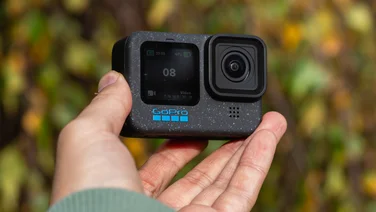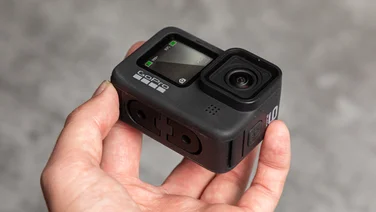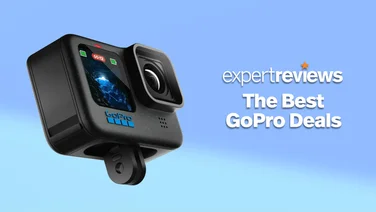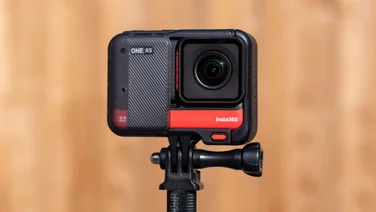To help us provide you with free impartial advice, we may earn a commission if you buy through links on our site. Learn more







- Fantastic video quality
- Backpack and Karma grip included
- Lacks advanced sensors
- No object avoidance or tracking
- Not as compact as DJI Mavic Pro
There was much excitement when GoPro first announced it was going to make the GoPro Karma, its very own drone. Until then, the burgeoning drone industry either made do with its own, substandard cameras or offered a GoPro mount for the ultimate in image quality.
With the Karma, GoPro would be able to offer the full package and capitalise on the growing market for semi-pro and professional drone video. But GoPro’s first attempt suffered from teething troubles.
It was withdrawn from sale shortly after launch and recalls were issued due to safety concerns, while all the time rival DJI was mopping up with its range of superb drones. The Mavic Pro proved you didn’t need a dedicated camera to provide awesome-quality 4K drone video, delivering safe, responsive flying and an incredible range of features in a compact, lightweight package. And now the DJI Spark is with us, offering serious features in a drone weighing only 300g.
GoPro Karma review: Key features and design
The Karma is back on sale now, though, and it offers a very interesting alternative. Ostensibly, it’s a direct rival to the Mavic Pro. It’s around the same price, it folds up and fits in a backpack and, in combination with a GoPro Hero 5 Black action camera, it will shoot incredible 4K video footage.
But the Karma is so much more than just a drone with a camera attached. It’s more like a drone/action-camera video studio. In fact, if you buy the full package with the handheld Karma Grip motorised stabilisation gimble, you’ve got an action cam, drone and professional video camera, all in one box. And the beauty of being able to design a system like this from the ground up is that you can make it much easier and simple to use.
And that’s the key strength of the GoPro Karma: simplicity. From initial charging and setup through to taking to the air for the first time, this is simplest enthusiast drone I’ve ever had the pleasure to fly.
The flying system comes in three parts: the drone itself, the camera and the remote control. The latter has an integrated 5in LCD screen so you don’t need to attach a phone, and the camera itself takes power from the Drone’s 5,100mAh main battery, so you only need to worry about charging two items to get started.







One of the biggest irritations with other systems is keeping all the various constituent parts charged – the drone, the remote and your phone or a tablet – but even the charger has been thoughtfully designed here, with a pair of leads protruding from a single power brick: one for the drone’s battery, the other terminated in a USB Type-C connector for charging the remote.
Once both bits are charged, flying the Karma is simplicity itself: turn on the remote, power up the drone, swipe up on the screen to connect the two together, and press the Start button between the two sticks. A short dab to confirm on the touchscreen and the Karma spins up its rotors, takes off and hovers at a safe height, waiting for instructions.
And that’s pretty much it. There’s no installing apps (if you don’t want to), no fiddly pairing and no cables to hook up either. It’s brilliantly straightforward. And there are plenty of features to play around with as well, all accessed via the touchscreen UI of the clamshell remote control.
The drone itself is solidly built. It doesn’t fold up as small as the DJI Mavic Pro (in fact it’s around double the size) and it definitely isn’t as neat, but with the propellers removed and the arms folded in against the sides of the Karma’s body, it will fit in a medium-sized backpack.
The pièce de résistance, however, is that the motorised gimble stabiliser can be removed from the front of the Karma and attached to the supplied Grip for smooth, stabilised handheld video shots.
GoPro Karma review: Performance and video quality
There’s no doubt that the Karma is neat, well designed and elegant. It’s been thoughtfully designed and, from a convenience point of view, that’s all fine and dandy. But as a straight drone, the Karma is a bit of a bust.
It lacks the downwards-facing camera and sonar sensors that enable DJI’s best drones to hang so solidly in the air, which also enable them to fly stably indoors. There’s no kind of object-avoidance system, either, and no sophisticated tracking. The Karma can’t follow you as you jog around a muddy rugby field or cycle along a dramatic ridge – you have to fly it mostly manually.
And the Karma has a couple of other weak spots, too. Battery life is on the short side compared with the Mavic Pro and its stablemates – you get up to 20 minutes per flight where the Mavic Pro delivers up to 27 minutes – and range is considerably shorter as well, limited to one kilometre instead of the seven kilometres offered by the Mavic Pro (that’s 4.3 miles to you old-schoolers).







I can’t imagine under what circumstances you’d want to fly at such a range, except perhaps to smuggle dodgy substances and other items over prison walls, but at least there’s the option. The Karma is by comparison a far more limited flying machine, with only a few preset camera moves (dronie, orbit, cable cam and reveal) offered as recompense.
And once it’s in the air, the Karma’s lack of sensor technology becomes immediately apparent. Even the slightest whiff of breeze is enough to unsettle the Karma and get it drifting; it moves about even when conditions are still. Added to which, it isn’t anywhere near as sharp and precise in its response to stick input as the Mavic Pro, and its top speed of 35mph (in Sport mode) can’t match the Mavic’s equivalent of 40mph.
The Karma’s main selling point is that it works so seamlessly with the Hero 5 camera (and Hero 4 with the optional adapter), which produces stunning 4K video footage at up to 30fps, 1440p footage at up to 80fps and 1080p footage at up to 120fps.
In my tests, the camera captured crisp details with perfect exposures, and incredibly smooth and stable footage, no matter how much the drone was jiggling around in the sky. Plus, with the advanced settings of the Hero 5 accessible directly from the touchscreen of the Karma’s remote control – including the camera’s colour-neutral Pro mode – it makes the Karma a seriously powerful tool for producing professional-level video.







The fact that the Karma Grip is included in the box is a bonus, too. It produces beautifully steady footage no matter how shaky your hands get.
GoPro Karma review: Verdict
That, in the end, is the main reason you’d buy a GoPro Karma. If you go for the whole package, including the Hero 5 camera, you’re getting an awful lot for your money. That’s a drone, the very best action camera in the business and a handheld motorised gimbal, plus a backpack and a couple of spare propellers into the bargain.
But, disappointingly, what you’re not getting is the very latest in quadcopter technology or the most responsive flying experience. And that matters: after all, getting the right shot is at least as important, perhaps more so, than image quality.
And so, although it isn’t quite as flexible, given the choice I’d still opt for the Mavic Pro. It currently costs £200 less at £1,099, and is absolutely stuffed with the best and latest drone tech.






